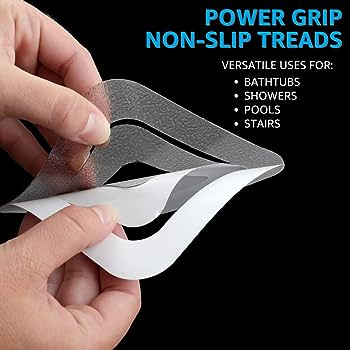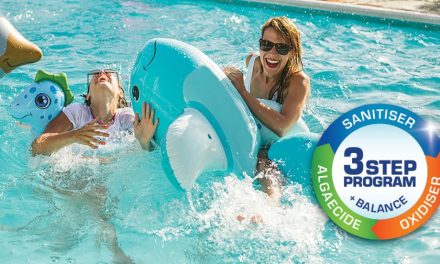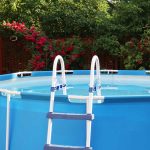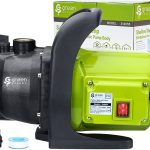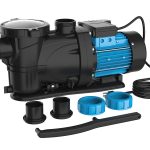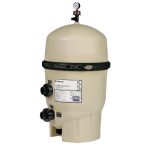Fiberglass pools can be slippery due to their smooth surface. However, there are solutions available to make them less slippery.
Fiberglass pools are known for their smooth surface, which can make them slippery. This can pose a safety risk, especially when it comes to pool steps and other areas where people may need traction. However, there are options to make fiberglass pools less slippery.
By adding a textured finish or using non-slip surface coatings, you can increase the grip and make the pool safer for users. These solutions can provide peace of mind while enjoying your fiberglass pool.
Are Fiberglass Pools Slippery?
Fiberglass pools are often a popular choice for homeowners due to their smooth surface and durability. However, one common concern is whether or not they are slippery. Fortunately, fiberglass pools typically have a textured non-slip surface that provides a natural grip.
Additionally, handrails and ladders can be installed to further enhance safety and prevent accidents. Unlike other pool materials, such as concrete, fiberglass pools are designed to minimize the risk of slipping and falling. While it’s important to note that no pool surface is completely slip-proof, fiberglass pools offer a safer option for swimmers.
Overall, fiberglass pools provide a balance between a smooth, comfortable surface and the necessary traction to prevent accidents while enjoying the pool.
Textured Non-Slip Surface
Fiberglass pools are known for their smooth and sleek surface, which can, unfortunately, make them slippery. However, there is a solution to this problem. By incorporating a textured non-slip surface, fiberglass pools can easily become less slippery. The addition of a textured finish provides a natural grip, ensuring that pool users can confidently walk and move around the pool area without the fear of slipping.
This textured surface not only enhances safety but also adds an aesthetic appeal to the pool, giving it a more visually pleasing look. So, if you’re concerned about the slipperiness of fiberglass pools, consider opting for a textured non-slip surface to make your pool safer and more enjoyable for everyone.
Disadvantages Of Fiberglass Pools
The most significant disadvantage of a fiberglass pool is the limitation on pool shapes and sizes. If you are looking for a large pool with multiple bodies of water or want a swim-up bar with bar stools built into the structure, then the fiberglass pool may not be the right choice for you.
Compared to vinyl and concrete pools, fiberglass pools have a more limited range of shapes and sizes available. This can restrict your options when it comes to designing a unique and customized pool. However, it’s important to note that fiberglass pools do offer other benefits such as durability and low maintenance.
So, while there may be a limitation on shapes and sizes, fiberglass pools can still be a great option for many homeowners.
Frequently Asked Questions On Are Fiberglass Pools Slippery
1. How Do I Make My Fiberglass Pool Less Slippery?
To make your fiberglass pool less slippery, there are a few steps you can take:
1. Install handrails and ladders for added stability.
2. Consider adding a textured non-slip surface to the pool’s floor and walls.
3. Apply a specialized coating or finish with a natural grip to create a textured finish.
4. Use underwater non-slip solutions, such as adhesive strips or mats, for extra safety.
By following these steps, you can help reduce the slipperiness of your fiberglass pool and enhance the safety of your swimming experience.
2. What Are The Disadvantages Of A Fibreglass Pool?
The main disadvantage of a fiberglass pool is the limited options for shapes and sizes.
3. Why Do People Not Like Fiberglass Pools?
One reason people dislike fiberglass pools is because they can be very slippery, especially on pool steps.
4. Is It Hard To Maintain A Fiberglass Pool?
Maintaining a fiberglass pool is easy. It requires less maintenance than concrete or vinyl liner pools.
5. Are Fiberglass Pools More Slippery Than Other Pool Surfaces?
Fiberglass pools do have a smooth surface, but they are not more slippery compared to other pool surfaces.
Conclusion
Fiberglass pools can be slippery, but there are ways to mitigate this issue. The smooth surface of fiberglass can become slippery when wet, posing a safety hazard. However, there are textured non-slip surfaces available that can be applied to the pool to increase traction and prevent slips and falls.
Additionally, handrails and ladders can be installed to provide extra grip and stability when entering and exiting the pool. While fiberglass pools may have a limitation on shapes and sizes, they offer many advantages such as low maintenance and durability.
It is important to consider all factors when choosing a pool and to address any potential safety concerns. By taking the appropriate measures to reduce slipperiness, fiberglass pools can provide a safe and enjoyable swimming experience for everyone.

